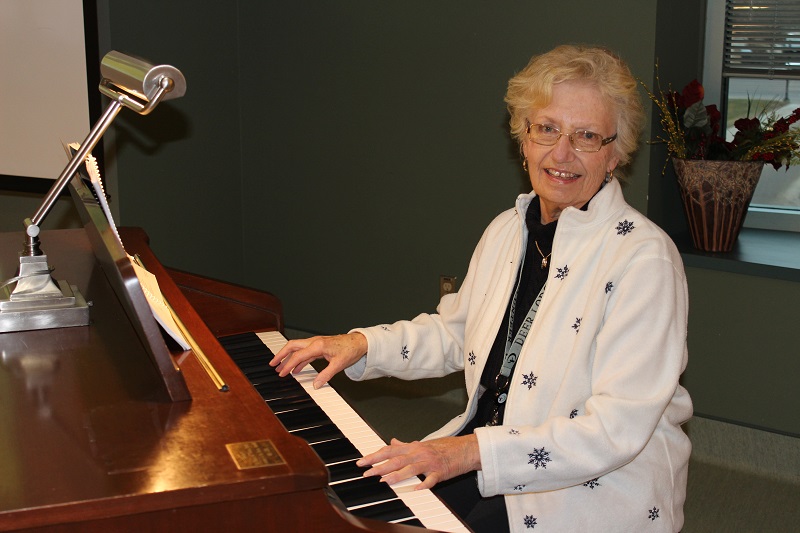
(Left to right: Daryl Dyck, Doug, Ivan Garcia, Cara Windle)
By Eugene Plischke
Researchers at Deer Lodge Centre have used an innovative therapeutic technique involving electrical stimulation to successfully treat a hard-to-heal wound, opening up new possibilities for the future of wound care.
Electrical stimulation, or e-stim, is also known as High Voltage Pulsed Current. The research team used the technique to help a 67-year-old resident at Deer Lodge Centre whose leg wound had resisted traditional treatment for two years.
The research team included members from physiotherapy and nursing. They committed to exploring the technique after finding previous research highlighting its effectiveness.
“There is excellent evidence in the literature to support this technique for treating difficult-to-heal wounds,” explains physiotherapy lead Cara Windle. “To our knowledge, no one in the province has used this technique before.”
The treatment plan for the resident consisted of four to five one-hour sessions per week over a 12-week period beginning in October 2016. The result was a stunning 98 per cent reduction in the wound area.
“Throughout the trial we clearly documented our procedures and results in order to support future work in this area,” says Windle. “We’re looking to be innovators in new areas of practice such as this.”
“At Deer Lodge we believe in nurturing potential, exploring possibilities and delivering compassion,” says team member Daryl Dyck, a clinical nurse specialist. “This project is an excellent example of how a collaborative multidisciplinary approach to care can support innovation.”
E-stim’s future looks bright, he adds.
“The WRHA has been supportive of our interest in exploring the use of e-stim for difficult-to-heal wounds, because if it works well here, it could be trialed at other sites.”
Recent News

Embracing Hope: The Impact of DLC’s Movement Disorder Clinic

Winnipeg Jets Parkinson’s Disease Awareness Game!

